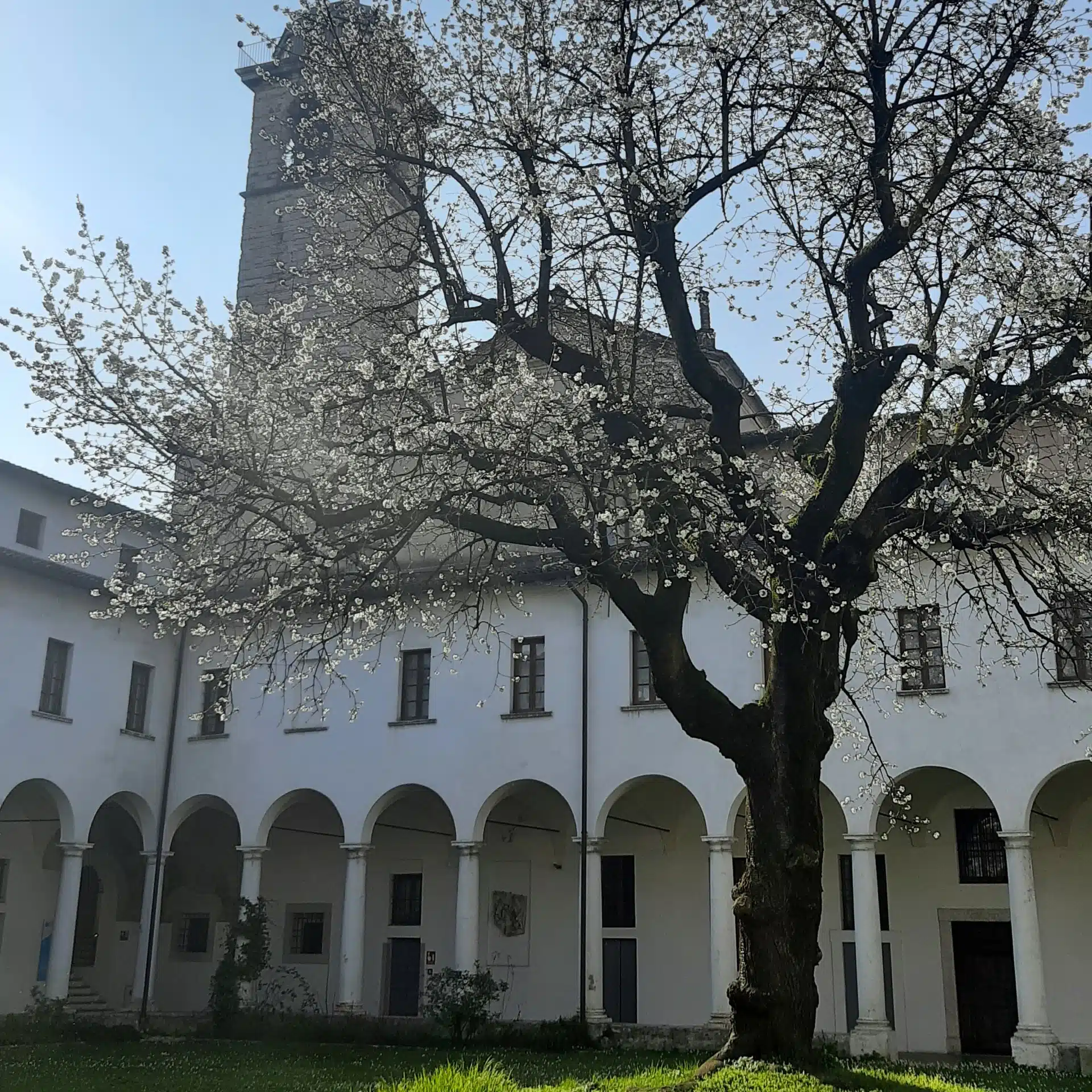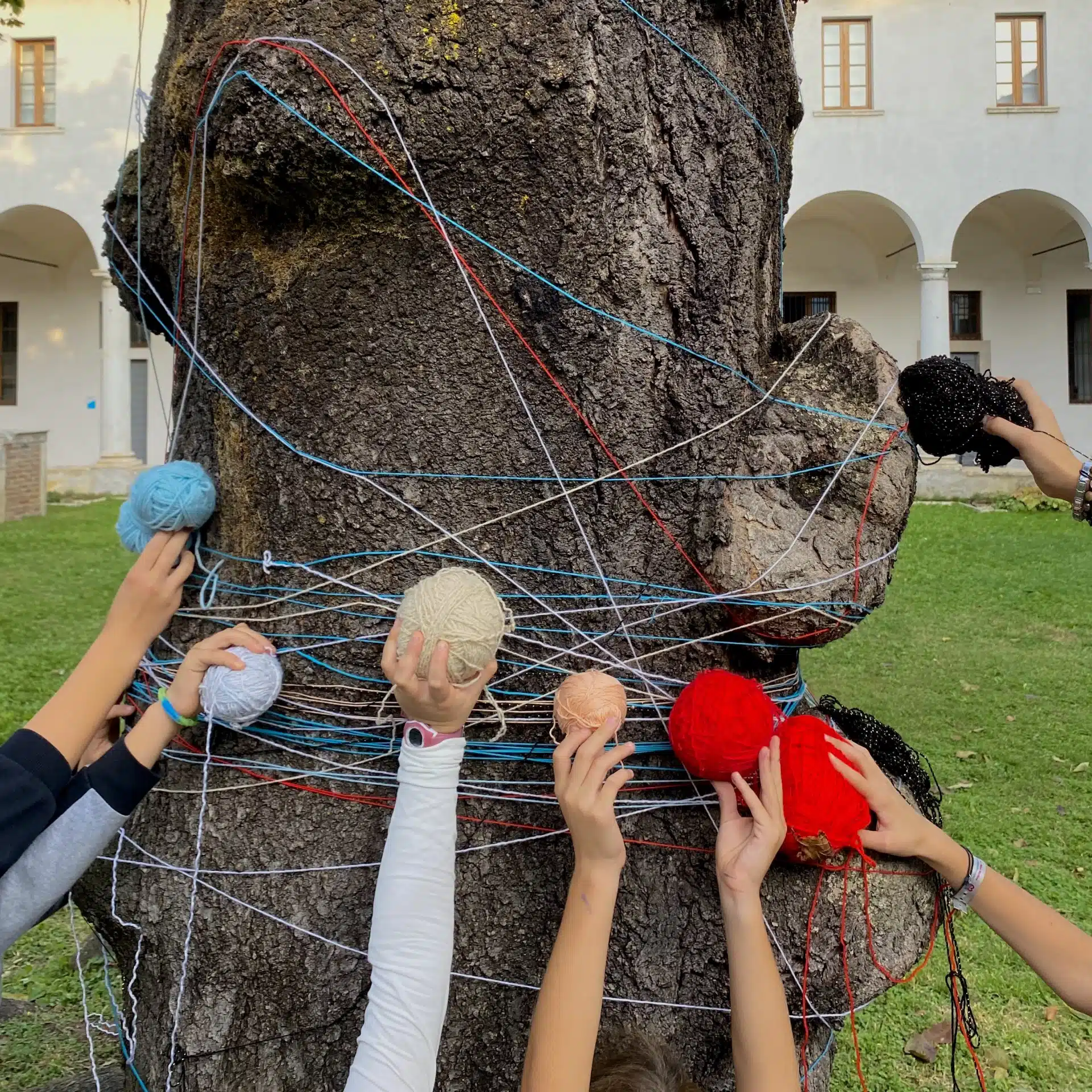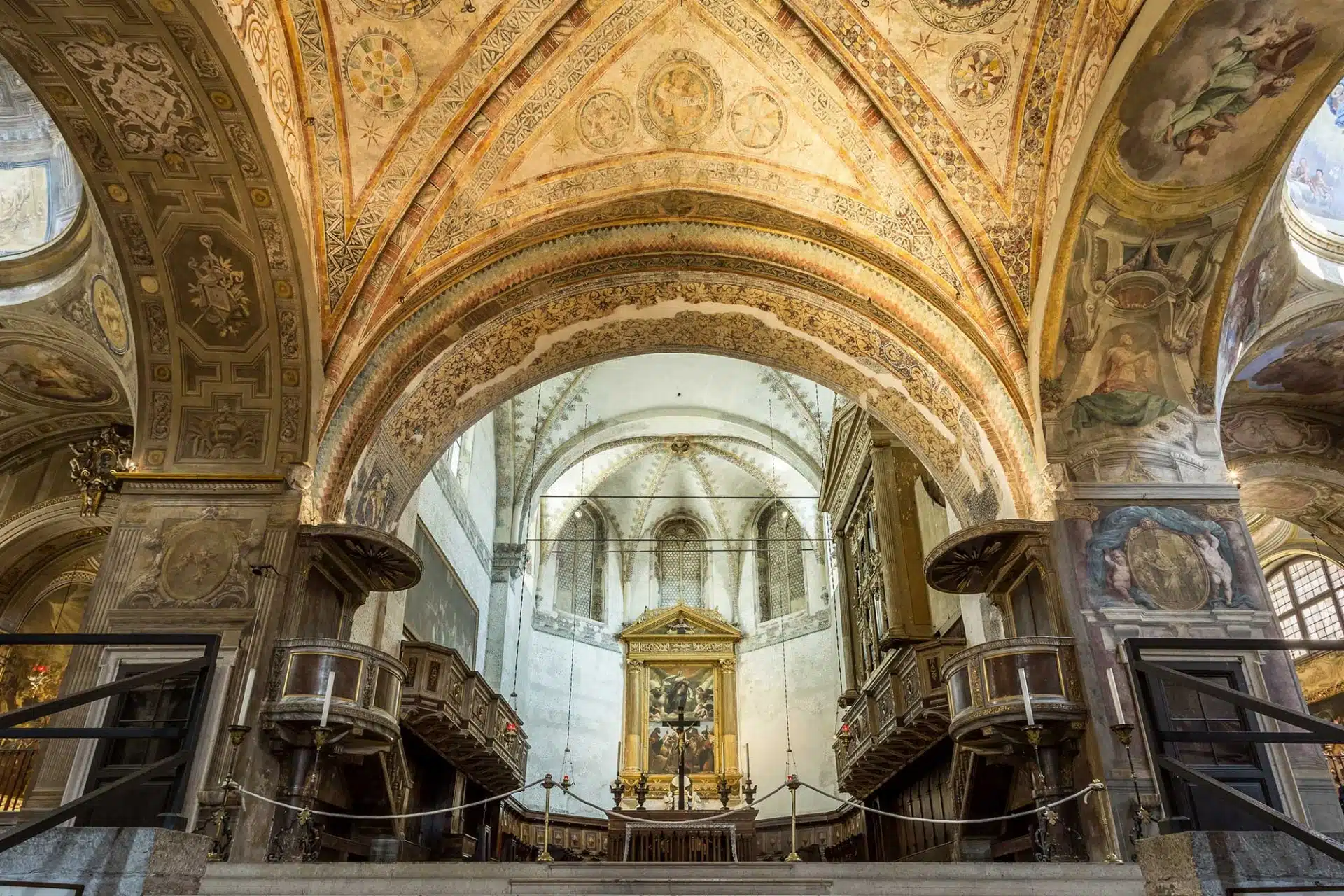Pianeta di Magasa
Autore: Manifattura francese (metà del XVIII secolo) Gros de Tour liserè broccato - 97x90 cm Provenienza: Magasa, chiesa parrocchiale di Sant’Antonio Abate -
Questa particolare pianeta proviene dalla chiesa parrocchiale di Magasa, paesino sito in Valvestino tra il Lago di Garda e il Lago d’Idro. Delle sue insegne correlate è rimasta soltanto la stola.
Nella costruzione del tessuto, un Gros de Tour su fondo di seta bianco con leggere sfumature azzurre, si riconosce una manifattura tipicamente francese.
La Pianeta di Magasa spicca fra le altre del Museo Diocesano di Brescia per la particolare vena fantastica dell’ornato, che si sviluppa in verticale con un andamento sinuoso.
È costituito da dei grossi fiori a forma di ombrello a colori alternati, rosa e viola, che si ripetono in orizzontale. Dagli stessi steli nascono altre foglioline e fiorellini che rendono più dinamica la composizione.
Le numerose trame broccate in sete bianche, gialle, verdi, scarlatte, rosa, viola, blu e marrone rendono ancora più preziosa questo pianeta.
Nonostante il gusto per l’esotico, il tessitore ha cercato di sfumare questi fiori con velate ombreggiature, per una maggior resa naturalistica.
La presenza del point rentré, i colori accesi dei fiori, la sottigliezza degli steli, il fondo chiaro e la soluzione tecnica suggeriscono una datazione di metà Settecento.











